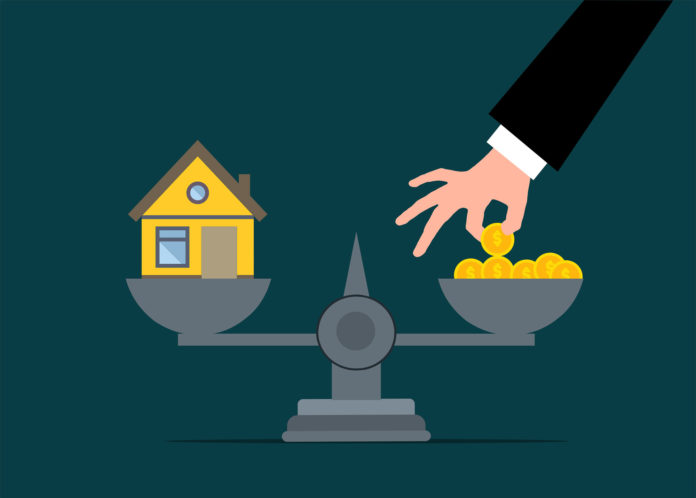
According to the Tax Foundation, California is 34th in the country—not last—in property taxes and Proposition 13 gives us an effective tax rate of 0.7%. Houses are assessed with purchase or new construction and then tax increases limited to 2% yearly. The tax is 1% of home value plus supplementary taxes, which are not itemized deductions.
The property tax raised more than $62.1 billion for local governments during 2016-17, half going to schools. You pay by April 10 and Dec. 10. What are the local tax costs of life in the Santa Cruz Mountains? Yes, consider property taxes well, but also sales tax, business tax, gasoline tax, etc.
When Santa Cruz real estate prices nearly doubled in 10 years, Prop 13 assessments inspire defense and there are multiple exceptions to reassessment on sale. Counties tax not only real estate but personal property used by businesses: e.g. computer equipment, furniture, tools. “Tangible personal property is any property, except land or improvements, that may be seen, weighed, measured, felt, or touched.”
The Board of Equalization exempts churches, museums, hospitals, free libraries, nonprofit schools and charities. Disabled veterans houses are exempt to $150,000.
Santa Cruz County promised to reassess fire or flood damaged houses with lower rates until equivalent properties were restored.
Homeowners save about $70-80 with a homeowners’ exemption and disabled or elderly homeowners can defer property taxes with liens if they earn less than $53,574, have 40% equity and no reverse mortgages.
Solar construction does not raise assessments.
Once in a lifetime, people over 55 may transfer assessments to Santa Cruz property to homes of equal or lesser value—and the disabled may do so twice. Santa Cruz County does not allow reciprocity with other counties.
Parents may bequeath assessments of principal residences and the first million of other properties to children or grandchildren (when parents died).
California’s Prop 19 lets taxpayers transfer tax bases three times and they can buy more expensive houses with additional property taxes only on the additional value of the principal residence. But there is a million-dollar limit. If you once bought a home for $400,000 and it sells for $1,500,000 with adjusted base of $450,000, then you would pay tax on $1,500,000 minus $450,000 minus $1,000,000 equals $50,000 plus original basis; you pay tax on $500,000 of $5,000. Without Prop 19, you would pay tax of $15,000 on $1,500,000.
Sales tax is the second biggest local tax and Santa Cruz residents pay the Board of Equalization 9.5% or 9.75% in Scotts Valley with 6% to the state. Wikipedia states: “As of July 1, 2022, 62 local jurisdictions levy no additional local sales tax, while 6 cities (all located in Alameda County) have the highest combined sales tax rate in California at 10.75%.” The driving force behind many local sales tax increases is “skyrocketing public pension costs and public employee retiree healthcare.” California ranks eighth in America for sales taxes.
In general, sales tax is required on all purchases of tangible personal property to its ultimate consumer—even from home-based merchandisers. Services are not subject to sales tax (but may be subject to other taxes), although some politicians want to extend the sales tax to services. Liability for sales tax attaches to the seller, not the buyer; but the seller is allowed by law to collect the tax from the buyer (and if the seller does so, the buyer is obligated to pay it). Professional services, medicines and unprepared foods are not taxed, but prepared foods or restaurant food is taxed; so eat your donut outdoors to save!
Businesses outside incorporated areas pay no local business taxes but, following Measure X, the base rate for Scotts Valley businesses became $150 plus taxes per employee. The City of Santa Cruz asks more than the County. There are city utility taxes (8.5%), parking taxes, event admissions taxes (5%), parking (10%), transient occupancy taxes (12% hotels and 14% residential properties) and retail cannabis (7%). So I appreciate rural living.
In conclusion, the Beatles rhapsodized:
Should five percent appear too small
Be thankful I don’t take it all
‘Cause I’m the taxman
Yeah, I’m the taxman.
Robert Arne, EA, CFP, MS, of Carpe Diem Financial Life Planning, gives holistic financial advice as his client’s fee-only fiduciary. He serves mostly Santa Cruz Mountain dwellers. These articles must not be as personal financial, mortgage, tax or investment advice; consult appropriate professionals. Learn more at www.carpediem.financial.










